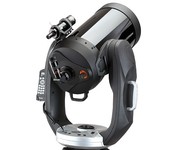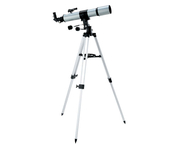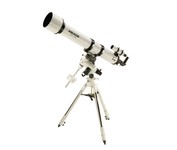Products reviews
Celestron CPC 1100 GPS (XLT) (70 x 280mm) Telescope$2,799.00
Tags:celestron, cpc, 1100, gps, xlt, 70, x, 280mm, telescope, | Meade 90AZ-ADR Telescope$170.00 to $200.00
Tags:meade, 90az-adr, telescope, | Meade LXD75AR-6 Telescope$1,199.00 to $1,200.00
Tags:meade, lxd75ar-6, telescope, |
Celestron PowerSeeker 127 EQ 21049 (750 x 127mm) Telescope
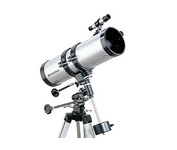
The PowerSeekers come in a choice of refractor or reflector, equatorial or altazimuth mount design. The PowerSeekers come with all coated glass optical components with for enhanced image brightness and clarity. The Newtonian reflectors offer larger aperture and greater light gathering power needed to resolve the faint detail of hundreds of deep-sky and other celestial objects.Minimize
Bushnell NorthStar 78-8831 (525 x 76mm) Telescope
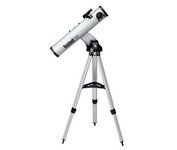
A "talking" high power reflector telescope. Up to 525x magnification and 3-inch reflector mirror. With the touch of a button this talking telescope describes the wonders of the night sky in a real human voice - an interactive and educational way to explore the universe. "Goto" Computerized tracking technology. Red Dot LED finderscope. Remote hand-held control module. Camera adaptable. Quick release tripod. Kinematic mount. Accessory tray. 20,000 Object Onboard Starfinding Computer. 1.25" Format Eyepieces. Barlow Lens. A great starting telescope!Minimize
Bushnell Voyager 78-9970 (100 x 70mm) Telescope
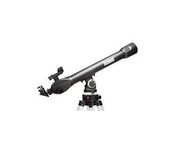
Voyager® Sky Tour™ series gives amateur stargazers a pro-grade audio tour of the night sky. Its Illuminated Smart Mount points the way as the talking handset describes constellations and planets, and keeps you engaged with entertaining facts and mythology tidbits. Keeping pace is easy with the LED red dot finderscope. You’re an instant expert with the Sky Tour series.Minimize
Celestron PowerSeeker 50 Telescope
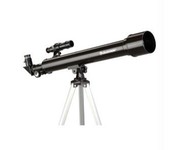
A perfect beginners model and a great gift for anyone! / Includes aluminum tripod. The CELESTRON Powerseeker 50 will bring out the stargazer in each of us, and even serves the astronomical yearnings that lead us to search for heavenly bodies in nearby apartment building windows! Optical Design: Refractor Aperture: 50mm Focal Length: 600Minimize
